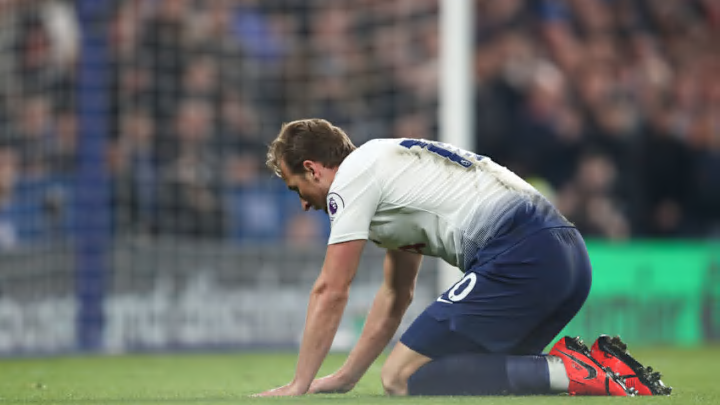Tottenham enter Saturday’s north London in a familiar, frustrating position, with their title challenge in tatters.
There isn’t a lot that links Turf Moor, London Stadium and Stamford Bridge, but for Tottenham fans there’s a rather tragic thread that weaves them together. It’s at this three stadiums, on three separate occasions, that a Spurs title challenge has, effectively, come to an end.
The past few years have been a golden age for Mauricio Pochettino’s side, undoubtedly Spurs’ most successful period of the Premier League era. Now an established member of the English elite, Tottenham have finished in the top three in each of the past three seasons, and barring a collapse they’ll make it four out of four in May.
And yet there’s a simmering frustration around the north London club. In some cases, frustration has even strayed into apathy, illustrated by the swathes of empty seats visible at Wembley Stadium for Spurs home games this season. It’s everywhere, even in the voice of Pochettino, who has more than once allowed his exasperation to bubble to the surface.
Of course, there are a number of different factors at play here. The continuing saga concerning the construction of Spurs’ new stadium has threatened to undermine their whole season. The move-in date was originally planned to be within a few weeks of the start of the campaign, but has been pushed back and back, with still no sign that a ceremonial ribbon will be cut any time soon.
This has seen Spurs take on a nomadic existence for the past two years, playing games at a Wembley Stadium that has never truly felt like home and even League Cup games 50 miles away in Milton Keynes. Never before has a team been so desperate to return home.
But there’s more than just homesickness to the mood around Spurs which has prompted even Pochettino to admit earlier this season to having the “worst feeling” of his tenure at the club so far. Frustration has built from the helplessness felt over Tottenham’s current position — better than the rest, but not quite good enough to be the best.
In 2015-16, 2016-17 and 2018-19, Spurs have mounted a title challenge of sorts, but fallen away before making the final stretch. That trend continued with last weekend’s loss to Burnley, followed up by the defeat to Chelsea on Wednesday, all but ending hopes of a title triumph for another year. Another defeat in Saturday’s north London derby could turn a blip into a slide.
But how can Spurs take the final step in their development when the only improvement they can make is incremental? With Daniel Levy unwilling to spend any money in the transfer market (it’s over a year since Spurs since anyone), Pochettino is dependent on yet more young talent rising through the club’s academy. That is hardly a sustainable plan.
It can sometimes be easy to overlook just how far Spurs have come under Pochettino. Not so long ago, just finishing in the top six, within touching distance of the Champions League places, would have been considered a success. Indeed, it took Spurs until the 2009-10 to finally crack the top four in the Premier League era.
Now it’s taken for granted, season after season, that Spurs will finish somewhere close to the top of the table. But it’s also taken for granted that they won’t finish top, and therein lies the frustration. They’re bashing their heads against a glass ceiling with no way of breaking through.
The argument could be made that the construction of New White Hart Lane (which still doesn’t have a name) came at the worst possible time for Spurs. Would they have finished closer to the top of the Premier League table had they been able to draw strength from a home stadium in each of the past two seasons? Probably.
This season feels like another missed opportunity, just like the 2015-16 and 2016-17 seasons were. Spurs will be in a better place when they finally move into their new stadium, but they have spent two years treading water when the current could have carried them even further down stream.
